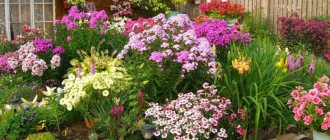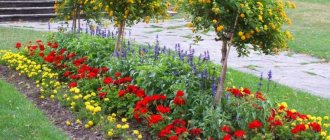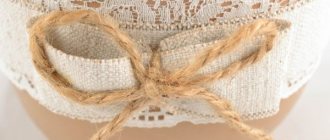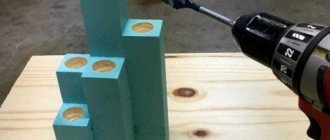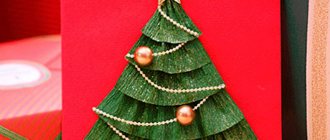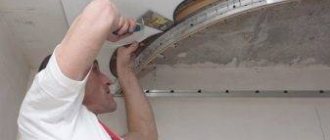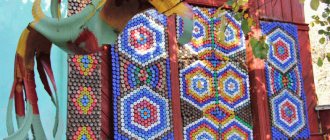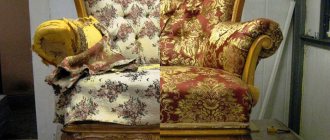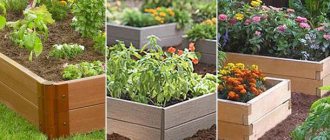Neat and beautiful flower beds are a wonderful decoration of the garden. They can be located in the garden itself, or along the path running from the gate to the house, and also serve as a kind of fence, marking the boundaries of the territory. Depending on the height of the flower beds, their shape, purpose, and your aesthetic preferences, you can use different materials and their combinations for fencing them.
For example, stone, concrete, brick, wood, tile, metal, glass, and ceramics. Recycled items such as dishes, wheels, tires, etc. are also suitable.
Our garden landscaping ideas here will help you gain inspiration and take your garden landscaping to the next level!
Concrete fencing
Concrete and stone fences are often very similar to each other, because an imitation of stone can be made from concrete. Thanks to this, you can make solid fencing walls from concrete, or lay them out from pieces, or make horizontal edgings of flower beds.
Read also the article “Hedges: what to plant?”
Here is one example of the arrangement of such flat stones made of “broken concrete” around the corner of a house.
It draws attention to the plants planted against the background of the wall of the house.
The following example shows how to make a low relief wall from concrete.
This design is very reliable and durable. It can also be painted or decorated in some other way, for example, by laying out a small mosaic.
Materials and heights of curbs - advantages and disadvantages
Any material can be used to zone the territory on the site. When choosing, you should take into account its features and characteristics. Borders for garden beds must be strong and reliable, able to withstand the pressure of heavy, wet soil. The specifics of the soil and the effect of chemicals on the part of the fence buried in the ground should be taken into account. You can install any garden border with your own hands; some types can be made independently from scrap materials. The size of the fence depends on the area, configuration of the flower bed or bed.
Plastic
The raw material for making borders is a non-toxic polymer. The material does not release toxic substances into the soil and does not deform at low or high temperatures. The following types of plastic fencing are suitable for any climatic conditions:
- Border tape. The flexible polymer can be 0.1-0.5 meters wide. Suitable for both forming beds and fencing shrubs. Mobile, lightweight product is easy to install. It is enough to dig a shallow trench around the lawn, stretch the tape, and secure it with stakes. Disadvantages: fragility, high probability of deformation due to mechanical damage.
- Net. Used for zoning areas, fencing flower beds and low beds. Often used as an additional barrier. Cons – does not retain moisture in the watering area, shaky, unstable structure.
- Plastic panels. Excellent moisture retention and soil pressure retention. The width of each polycarbonate piece does not exceed 15 cm; if desired, you can connect them and make a high fence. The simple design is assembled using corner fasteners and grooves.
- Garden designer. The universal set for garden beds includes several plastic parts that are connected thanks to special grooves. Can be used for flower beds, beds of any irregular shape. Plastic board. Similar to panels, but different in composition and appearance. Boards are made from wood waste and polymers. The product has the texture of natural material. The finished box is fixed in the ground thanks to hinges and stakes.
Metal
Flat curbs are made of steel, corrugated board, galvanized, coated with polymers, which significantly increases the resistance of the material to the negative effects of moisture. Decorative structures can be purchased at the store or you can make your own metal box from roofing iron and corners.
Some of the most durable types of borders expressively define the boundaries of paths and harmonize with all surfaces of garden paths. Metal fences can take the form of ribbons, rods, blocks made of corrugated sheets, and can follow any winding shape of a flower bed.
Decorative fencing has several significant drawbacks - it quickly heats up in the sun, which is detrimental to plants in contact with it. You can reduce the temperature by lining the inside of the fence with cardboard. The high cost of the material also reduces the demand for this type of border.
Brick
The brick border looks reliable and solid. Facing bricks can withstand temperature changes, street conditions, and constant contact with the soil. Simple material for marking boundaries allows you to adjust the height of the structure and fits perfectly into any design of the local area.
Any owner of a summer cottage can make a border out of brick or foam block on his own. The work does not require special construction skills. Fast and easy execution is supported by an affordable price. Thanks to the universal shape of the red bars, you can design borders of any shape - in the form of a ladder, in rows on an edge. Negative aspects include the need to fill the foundation and lengthy phased installation.
Concrete strip fencing
Durable concrete mortar curbs have the longest service life. The permanent structure is installed on previously prepared soil. You will also need to make formwork and prepare a solution of cement, water, sand. The form for pouring can be made from wooden boards or plywood, taking into account the width of the future fence - it should be at least 15 cm.
Practical concrete curbs do not change the acidity of the soil. Such a fence can be stretched across the entire site, beds and flower beds can be decorated in the same style, and pedestrian paths can be identified. You can diversify the gray unsightly material with the help of mosaics. The top edge of the border is decorated with glass fragments, colored stones, shells, and the bottoms of glass drink containers.
The disadvantage of strip concrete fencing is its heavy weight and inability to be dismantled. Such a board cannot be installed on loose soil. From an aesthetic point of view, it is suitable for beds with massive, tall crops. Delicate strawberries and primroses will look ridiculous against the background of a concrete fence.
Natural or artificial stone
Stone fences have the most attractive appearance. Decorative, artificial stone is not inferior in strength to concrete and brick. The variety of materials allows you to create real design masterpieces, making simple, elevated structures.
Garden beds with a stone fence are a bright picturesque element. The surface of the parts can be smooth, chipped, fired, polished, aged, etc. Regardless of the design, the natural material does not lose its attractiveness and looks beautiful at any time of the year. You can combat inevitable contamination with the help of special impregnations.
Artificial stone imitates the look and texture of natural material, but is cheaper. Durable borders can be given any shape. The only difficulty is the need for minimal masonry skills, alternating uneven edges to obtain a durable fence.
Wattle
Once upon a time, an unchanging attribute of a rural yard was very popular. The wattle fence was present at every site. Modern summer residents use a semblance of tyn to create original beds and flower beds in an ethnic, eco style. Wicker structures will give the site a natural look without any financial investment.
Frame borders made of flexible branches have mainly decorative value and go well with other materials on the site. These can be hanging or ground beds. Fences can be dug into the ground or installed without fixation and moved in any direction. To stretch the vine between the posts, several methods are used: horizontal, vertical, checkerboard, oblique.
Tree
A classic option for framing beds. You can use wood of any size and finishing method. The materials used are clapboards, slabs, scraps of boards, solid barrels, and logs. With cheap, affordable material you can easily cover a flower bed in any area; it has a natural, aesthetic appearance. The box can be left without a bottom or the bottom of the frame can be covered from rodents with a metal mesh.
But not every wood is suitable for growing vegetables. Some rocks can emit resins that negatively affect the soil composition. Also, wooden borders must be periodically treated with an anti-rotting solution.
Pergones
Steel boxes with crushed filler look modern and neat. Lattice tall boxes are filled with crushed stone, pebbles, and stone treated with glass. Functional, practical, aesthetic borders fill the area with harmony and tranquility, emphasizing the closeness with nature.
The beds can be made from solid structures or individual blocks can be installed at a distance. These can be low, high, multi-tiered sides. A fence and paved paths will perfectly complement original products of the same type. The cost of pergons is influenced by the filler, type of fastening, profile, and the need for a foundation. In any case, it won't be cheap.
Brick fences
Bricks and pavers can be carefully laid around flower beds to create simple, neat patterns.
And here you can see ideas on how and what to decorate a fence at the dacha
For example, place one row horizontally and the other vertically.
And two more similar options:
Or this pattern, made of ordinary bricks. Each piece of the pattern consists of 4 bricks and a decoration in the middle.
As an additional decoration element, you can add lighting along the inside of the brick fence.
Thus, the flowerbed will look wonderful not only during the day, but also at night.
Bricks can also be laid at an angle, as in the next photo. The result is a jagged fence that creates a rustic look.
Flowerbeds can be located on both sides of the path in the garden, and in this case, it will serve as their fence.
To make it more unusual, you can experiment with the shape and make it wavy rather than straight.
And another option with brick:
Fences for flower beds made from scrap materials
If the presented options are too expensive for you, then do not rush to get upset. After all, even with simple materials that you have at home or in the garage, you can make an interesting fence.
Fences for flower beds are really necessary not only in public places, but also in private houses. They perfectly complement the landscape design and generally make flower beds more well-groomed and beautiful.
Metal fencing
Flowerbeds can be planted either at the level of the entire landscape or slightly raising them above it. When making an elevation, it is important that it is strong and secure, and holds the flowerbed in place. A material such as metal will cope with this task wonderfully.
Look, for example, at the following photo, in which a raised flowerbed is protected by a “rusty” metal winding. Simple and beautiful!
And here is another similar option, but here the fence goes in a zigzag, not in waves:
Corrugated steel panels can also be used. When combined with wood they create an interesting and modern design.
Stone fences
Stone is a very popular material for edging flower beds as it gives them a natural and natural look. Stones have many shapes, sizes, colors, and also differ in appearance and texture. This allows you to use whole stones for construction, or trimmed ones, as well as their combination for the desired result.
Gabion fencing
Gabion is great for fencing flower beds. It looks natural, yet structured, and blends well with the environment. It is also strong, reliable and durable.
The metal cage can be divided into sections (for example, by wooden partitions, as in the first example), or be integral. The size of the stones for filling the gabion and their shape can be very diverse, the main thing is that they do not fall out through the checkered fence.
Stacked Flat Edged Stones
One simple way to fence a flower bed is to use flat edged stones, laid out on top of each other around the flower bed in several layers.
Small pebbles
A small stone border can separate both a flowerbed and a lawn and a house and a lawn. To do this, you need to make a small depression along the border and fill it with small pebbles.
Packing crushed stone between bricks
This lawn fencing idea provides contrast with the brick and wide strip of crushed stones.
Here is another example of this use of small pebbles:
Here, pebbles of different colors were used to enhance the contrast of the border.
Stones combined with bricks
This fencing of smooth stones and bricks gives a very natural, not too “flawless” look. As you can see, there are no complicated instructions for installing rock landscaping, other than the fact that each stone will need to be lifted and put into place, and this requires a certain amount of physical strength.
Using stones of different sizes provides great contrast. Small stones create a nice transition border, while large stones form the main border and keep the flower bed raised slightly above the level of the lawn.
It is also possible to combine stones with sand, in which case it is as if you are creating a small piece of the beach in your garden.
And a few more options with stone:
And even marble:
Types of garden fencing for flower beds
They are:
- Primary. Using the border, the perimeter of the future flower garden is outlined. The shape of the border is arbitrary (round, semicircular, rectangular). Inside, the soil is plowed, embankments are made, and a flower meadow is planted.
- Secondary. Placed in place of an existing flower bed. Can be a replacement for an old fence.
Flower beds are divided into 2 groups:
- Regular. These are flower beds and ridges in small gardens. They are created in the form of neat geometric shapes with clear contours. Fences made of metal, plastic, stone, forging, and other design options are appropriate here.
- Free. These include rockeries, rock gardens, and mixborders. Fences for them are made exclusively from natural raw materials - boards, stones, logs, wicker branches. Such a flower garden should look like a corner created by nature.
Let us examine in more detail the types of materials suitable for fencing flower beds and front gardens.
Plastic
Plastic fences are bought ready-made in the store. They are light weight and easy to install. The most popular is the sectional option, as in the photo above. They do not require finishing or painting or maintenance. The forms are different. At the edge of each section there are cast legs, due to which the fence is held in the ground. Service life is not limited.
But the slightest blow will lead to a crack, breaking off a piece of the section.
Sold in packs. Each kit comes with installation instructions. The sections are simply driven into the ground with a rubber hammer to the required depth.
Another option for plastic fences is a border. This is a continuous flexible tape in rolls. There are types with and without legs. In the latter case, most of the tape is buried in the ground.
The flexibility of the material allows you to create flower beds of unusual shapes.
With such a border, moisture is well retained inside the flower bed, and there is no access for weeds.
Plastic fences are inexpensive, sold in different colors, and can be installed quickly. Both familiar flowers (majors, tulips, petunias, daisies) and exotic ones look great with them.
Metal
Iron structures are much more reliable and do an excellent job of protecting. But any metal that is constantly exposed to moisture begins to rust. To prevent this and extend the service life of the fence, all metal elements must be treated with anti-corrosion agents before installation.
Let us examine in more detail the suitable types of materials for metal-based fences.
Profiled sheet
Corrugated sheets – profiled steel sheets.
Polymer-coated sheets are considered to be of the highest quality. They are not afraid of corrosion and do not require painting.
Available for sale in a wide range of colors.
New leaves are rarely used to fence flower beds. Most often, remnants of corrugated sheeting from a street fence or roof are used.
If they want to use pieces of sheets as a border strip, they simply dig it partially into the ground. It is important to ensure that the top edge is not sharp, otherwise there is a risk of injury when planting or caring for plants.
The photo above is an example of using galvanized corrugated sheeting as a frame for beds. The bottom is covered with agrofibre. Soil is poured on top and cultivated plants are planted.
Forged
Forged fences around the flower beds look beautiful. Making them yourself is not easy. Must have good experience working with metal and welding. There are ready-made sections made by cold forging on sale.
To obtain unique artistic products with designs based on a sketch or drawing, you need to seek help from a blacksmith.
Forged structures are durable, do not corrode, look very beautiful, but are expensive.
To install the sections, you will also need low posts - a pipe made of metal profiles. First, it is recommended to concrete the pillars in increments equal to the size of the sections. Then weld the sections to the posts.
On an estate where there are small children, it is better not to install forged fences with a sharp top to prevent injury to children.
Welded
Inexpensive fencing. The reinforcement bars are carefully welded together in the form of a lattice. Such fences are often found in parks and around playgrounds. Can be used as a hedge for garden beds and flower beds.
Photo: welded mesh sample
Sold as finished sections. The kit includes fastening elements. The choice of colors is unlimited. If desired, the fence can be repainted in a different color.
Welded structures with a polymer coating against corrosion last the longest.
You can make such a fence yourself by selecting the required diameter and quantity of reinforcement bars. Type of connection – welding. It is important not to forget to thoroughly prime the fence and paint it to protect it from corrosion.
Wooden
Very practical hedges. They are cheap. They look original and interesting.
But any type of wood does not tolerate constant exposure to moisture and rots and is susceptible to damage by insects.
Photo: decorative wooden fence
Fence
One of the popular country fencing. For flower beds, planks up to 0.5 m high are used. The picket fence is attached to a wooden frame and dug into the ground.
The wood is left in its original form, emphasizing the beauty of the structure with varnish, or painted in the color you like.
The top of the picket fence is designed at the discretion of the owners. Can be made pointed, wave, peaks.
Here is a striking example of the design of planks of different heights in the form of multi-colored men. It turned out very interesting.
Wicker (rods or branches)
A cool option for a rustic-style plot. Ready-made fences become a decorative element.
Photo: wicker fence made of branches
Thin branches of vine and hazel are used as material. The rods are pre-soaked in water. This way they will be more flexible and easier to form into the desired shape.
A good wattle fence can last up to 10 years. Then the branches will begin to shrink and lose their shape.
The costs for it are minimal. The main thing is to master the weaving technique correctly.
The finished wattle fence is dug into the ground. They are great for zoning an area and arranging flower beds in the form of a labyrinth.
From boards, pieces of logs
For fencing flower beds, edged, unedged boards or slabs are used. The bars and pieces of logs inserted into the ground look interesting.
Summer residents often do not buy fencing material specifically, but use leftovers from what they have in everyday life.
The photo above is an example of purchased sections made of boards, designed in the form of a lattice. The columns are made of timber. Sections are inserted into the ground.
In homemade fences, the raw materials must be treated with a primer. The finished fence is painted in the desired color.
Concrete
It’s easier to buy an original concrete fence ready-made than to make it yourself.
Sold as:
- slabs;
- decorative sections with patterns;
- borders.
Such fences must be mounted on a cushion of sand or mortar. Can be installed directly into the ground or placed at a certain height.
Ready-made flowerpots or bowls for flowers look beautiful. A concrete fence goes well with a top layer of brick (as in the photo below).
Concrete curbs are often used for zoning a site.
Stone or brick borders
This type of fencing is most often found in rockeries and alpine slides.
Stone fences are durable. They fit perfectly into the natural composition of plants and trees.
To create a fence of stones, simply lay them out in 1-2 rows without cement or on dry mortar.
Layered sandstone and granite look good. The choice of plants and shrubs to fill the flower bed is unlimited.
This is the mini-composition you get if you connect small cobblestones with cement mortar.
From slate
Slate is often used for low fences in country houses. Slate fences are made from leftover material after replacing the roofing or fence.
The disadvantage of asbestos-cement sheets is fragility. Any impact will cause cracks to form.
To ensure that the flowerbed always maintains its shape and the soil in it does not shift, pieces of slate are supported from the outside with wooden blocks driven tightly into the ground.
Article on the topic: “Is it possible to make beds from slate.”
Here is an example of fencing beds that are located on a slope.
Gabion
A gabion is a fence made of mesh and stones. It is classified as an element of landscape design. It does not require a foundation. It can be made of any shape and height.
You can make a metal mesh frame yourself or buy it ready-made. Stones are carefully placed inside the frame. Cobblestones can be taken of the same type and color, or you can harmoniously alternate different ones.
Such a fence will fit perfectly into any site design and will not require maintenance.
When choosing a mesh for a gabion, you should not save. It is necessary to take it with a reliable anti-corrosion coating. Otherwise, the rusted mesh will spoil the appearance of the fence.
From improvised means
Budget-friendly but original fences, the creation of which does not require spending money on purchasing materials.
Bottles (plastic, glass)
Empty containers for lemonade, water, and other drinks, dug into the ground at the same distance, form an unusual fence for a flower garden.
In addition, you can make original figures of animals, birds, and fairy-tale characters from plastic containers. Such crafts will be an excellent decoration for the yard.
The photo shows an example of a fence made of bottles for a garden bed. The containers are connected to each other with a thick thread, which is attached to stakes inserted into the ground on the sides of the bed. The fence prevents the soil from moving and blocks the path of weeds.
Here is an option for using glass bottles. When dug into the ground close to each other, they form a beautiful blue border.
Car tires
Old car tires can be turned into a beautiful flower bed. Installation and painting methods are not limited.
A bright orange bug has placed a small flower garden.
Several brightly colored tires turn into an unusual tea set.
A simpler, but also original version of a flower bed. The tires are laid out in the shape of a flower and painted in different colors.
DVDs, CDs, vinyl records
Many craftsmen have found use for old musical vinyl records and discs. They make interesting decorations for flower beds.
Vinyl records inserted around the perimeter of the flower bed will become an original fence.
But in the photo, tall bright flowers were made from vinyl records, thereby decorating the flowerbed.
So you can use discs to lay out a path in the yard.
To make a fence out of discs, you need to tie them together with a rope, drive stakes into the corners of the flower bed and attach a rope to them.
Wooden fences
Wood, like brick and stone, comes in many forms. The most common type of fencing is the raised garden bed, but as you'll see, there are many more types!
Horizontal wooden beams
The beams are placed at angles to the fence and only one plant is planted in each “growing zone”. Also used here is a combination with decoration with small pebbles.
Vertical wooden beams
Such beams, cut to different lengths, make the fence a little chaotic and give it uniqueness.
Here's another example where the beams are already aligned to the same length:
You can also add original decorations, such as “stone legs”, or anything else interesting that you want!
Small fence
Fencing a flower bed in the form of a miniature fence is very simple to do, but it looks interesting and funny. The boards can be simply varnished, painted plain, or a combination of different colors. The fence can be smooth, or consist of boards of different lengths.
Or here’s another example of a small fence made from old pallets:
Chopped trees
Wood can be used as a fence even in its most natural form, that is, using tree trunks or their thick branches.
And a few more options for using wood:
Purpose and advantages of decorative fencing
The purpose of a garden fence is to create the effect of completing a flower garden, visually highlighting it against the background of a garden or yard.
In addition, fencing gives owners a number of advantages:
- Protection from pets. If the height of the fence is 0.5 m, it will be difficult for a small dog or cat to overcome it, so the flowers and plants in the garden will remain intact.
- Estate decoration. Original design ideas turn the flowerbed into part of the landscape design.
- Protection from small children. During active games, a ball may fly into the flower bed or a child may fall. The fence will help keep the plants intact. To avoid injury, the top of the fence should not be made pointed.
- Dividing a vegetable garden, garden or entire estate into zones. This simplifies the process of caring for cultivated plants and flowers.
- A solid fence prevents plants from growing throughout the yard. This is especially true for climbing, rapidly growing species.
- The fence is an obstacle for the lawnmower. When mowing the lawn, the flowers will be protected from accidental damage.
- The soil in the flower bed will not crumble or become polluted during precipitation.
A homemade decorative fence does not require investment of money. It can be made from available materials.
Wicker fences
These fences are the true embodiment of rustic style, and are made mainly from wicker.
But it is also possible to weave a fence using old hoses.
Other fencing materials
We have already considered the main materials, so finally we offer ideas for fencing made from unnecessary items found at home.
Glass bottles
Dishes, pots
Wheels, tires
Old furniture
Bowling balls
Shells
Wooden and metal buckets, baths, etc.
Old pipes
Raised flower bed with hay fencing
↑ Using scrap materials
Having free time and some skill will help you save a lot of money. Many gardeners, instead of spending money on ready-made garden fences, choose the option of making their own fence from scrap materials.
Examples of original solutions:
- Fence made from PET bottles. For this, it is recommended to use dark plastic containers, given their high practicality. Glass bottles are also permitted. They need to be stripped of their labels and filled with sand to increase stability. The elements prepared in this way are dug into the ground with their necks down, which makes it possible to obtain a rather interesting composition.
- Construction made from old vinyl discs or cymbals. They are dug halfway into the ground along the line of the flowerbed. The disadvantage of such fences is their fragility.
- Fences made from old umbrellas or tires. Automotive rubber demonstrates good resistance to constant humidity. The outer walls of the tire may be painted. The flowerpots obtained in this way are dug into the ground or raised onto stands.
